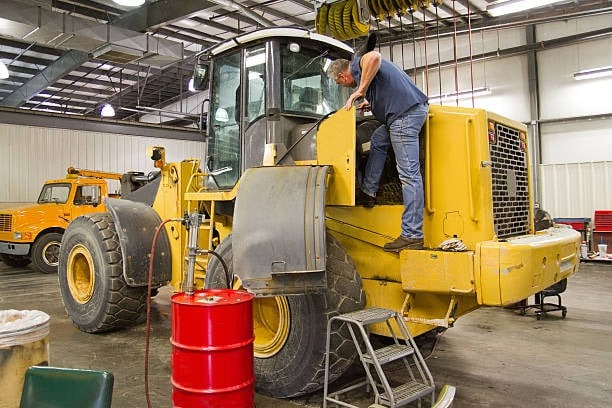How to Grow Your Heavy Duty Repair Shop with Technology

Do you feel that your heavy duty repair business isn’t growing as expected?
Businesses that rely on heavy machinery and equipment can never stop because they do some of the work no one else can. These companies are very important for making sure that construction and manufacturing run smoothly. While you fix industrial-grade machines, your repair shop is stuck using old systems and manual processes. Pretty soon, the volume of repair is going to go higher, and the need to grow will become clear. However, without the right technology, it will be hard to do so.
In today’s world, a heavy-duty repair shop can’t grow if it only uses traditional methods. Technology is now a must-have for everything from managing inventory to tracking work orders to talking to clients to making sure that operations are the same. Investing in automation and software tools is the key to long-term growth, especially for businesses that want to grow into new areas or run as a franchise.
Why a Lack of Software Tools Can Hold Back Growth
A lot of heavy-duty repair shops start out small, with a few skilled technicians and an owner who is hands-on. They serve local customers. At first, pen-and-paper systems or basic spreadsheets may seem like enough. But as the number of customers grows, things get more complicated. There are a lot of work orders to get done, and customers want things done faster. Everything slows down without a digital infrastructure. This is where you need heavy duty repair shop management software to streamline tasks and ensure steady business growth.
Without repair shop software, departments can’t talk to each other as well. Technicians might not be able to get real-time updates on their jobs, and front-desk staff might have trouble giving accurate estimates. Managers often can’t see performance metrics, which makes it hard to find problems. More importantly, owners have a hard time giving up control or stepping back from day-to-day tasks without digital tools.
Without consistency, it is almost impossible to expand to more than one location or start a franchise. Every new branch ends up making its own process, which causes problems with service and makes it hard for managers.
How Software and Automation Help Repair Shops Grow
Using repair shop software can completely change how a heavy-duty repair business runs. Automation makes sure that everything is done the same way, quickly, and accurately. It cuts down on mistakes made by hand and lets employees focus on what they do best: fixing equipment and making customers happy.
The repair ticketing system is what makes automation work. With special software, we can keep track of every repair job from when it starts to when it’s done. Managers can automatically give out tasks, keep track of how things are going, and let customers know what’s going on. This makes sure that every job is done well and that everyone can see what’s going on at all times.
Tracking parts and supplies in real time makes inventory management easier. The software lets users know when stock is running low so that they don’t have to wait for parts that aren’t available. It also tells you which parts are used the most, which helps you make better buying decisions and cut down on waste.
Built-in billing modules make it easier to send and receive invoices. These tools make invoices that are correct based on labor, parts, and taxes. Customers can pay in a number of ways, and all transactions are logged so they can be easily found later.
Creating a Franchise Model on a Digital Basis
A heavy-duty repair shop needs a system that can be copied and grown in order to become a successful franchise. Repair shop software lays the groundwork by standardizing processes, keeping track of KPIs, and bringing management together. Technology makes sure that service, prices, and the customer experience are the same no matter how many locations the shop has, whether it’s three or thirty.
With a software-based franchise model, new locations can open with little training. Built-in tutorials and guides help staff learn how to use standardized workflows. A central dashboard lets owners keep an eye on how well each location is doing. This means that everyone is responsible and there is no need for micromanagement.
Accepting the Future of Heavy-Duty Repairs
The repair business is changing, and heavy-duty shops can’t afford to run without modern tools anymore. With the right systems in place, a small business that started out serving a few customers can quickly turn into a franchise. The way to get there is to accept automation and use repair shop software that is made for the challenges of heavy-duty work.
Not only does technology make daily tasks easier, but it also opens up new possibilities. It lets business owners leave the repair shop and take on a leadership role in the company. It gives workers the tools they need to do their jobs better and faster.




